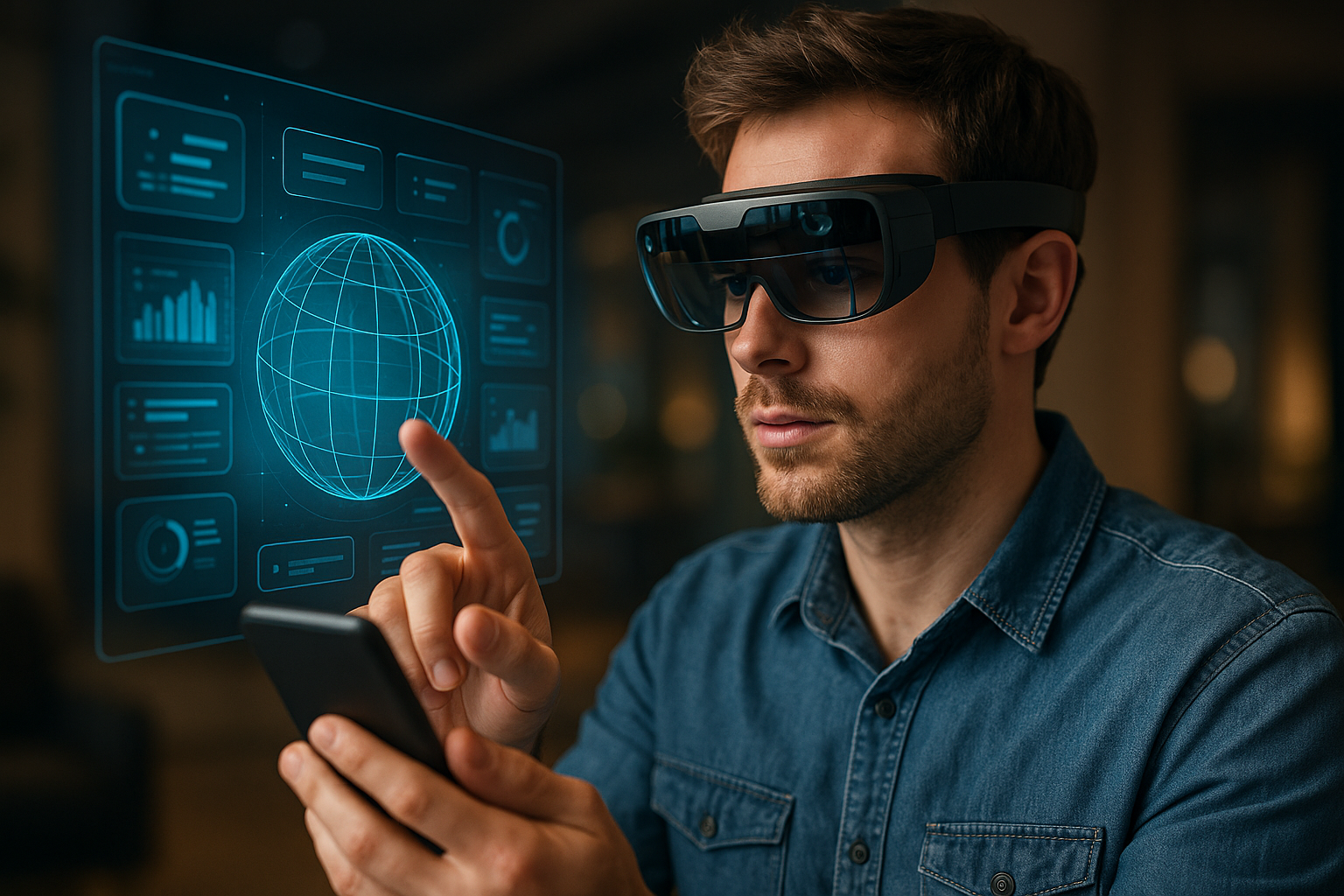Augmented Reality: A Visionary Leap in the Digital World
Peek into the future with Augmented Reality (AR). Once confined to science fiction, this technology is now transforming how we interact with the digital world. Captivating yet accessible, AR blends the real and virtual realms, enhancing our experiences with a unique digital overlay.

Bridging Real and Virtual: The Journey of Augmented Reality
In the late 1960s, Ivan Sutherland, often referred to as the “father of computer graphics,” laid the groundwork for AR with the invention of the “Sword of Damocles,” the first head-mounted display system. However, the term “Augmented Reality” wasn’t coined until 1990 by Tom Caudell, a researcher at Boeing.
The 21st century witnessed significant advancements in AR, with tech giants like Google and Apple introducing ARKit and ARCore frameworks, facilitating the development of AR applications. These tools have made AR more accessible, driving its integration into various industries, from gaming and entertainment to retail and healthcare.
AR Today: More Than Just a Novelty
In recent years, AR’s potential has moved beyond gaming, demonstrated by the success of Pokémon Go, to more practical applications. IKEA’s AR app, IKEA Place, enables customers to visualize furniture in their homes before purchase. Similarly, medical practitioners use AR for surgical procedures, enhancing precision and safety.
Moreover, during the Covid-19 pandemic, AR has played a pivotal role in remote learning and work, providing immersive, interactive experiences that bridge physical distances.
AR’s Market Impact: Growth and Future Prospects
According to Statista, the global AR market is expected to reach $198 billion by 2025, a significant leap from just $3.5 billion in 2017. This growth is attributed to advancements in AR devices and software, increased smartphone penetration, and the rising adoption of AR across industries.
However, the high development cost of AR technology and the need for robust hardware could pose challenges to its widespread adoption. As AR continues to evolve, these hurdles are expected to be addressed.
AR’s Influence on Society: The Next Digital Frontier
AR is enhancing our interaction with the digital world, blurring the lines between what’s real and what’s virtual. It’s revolutionizing industries, changing the way we shop, learn, work, and play.
However, like any technology, AR also raises ethical and societal concerns. Issues around privacy, data security, and the psychological impact of blurring reality and virtuality warrant careful consideration. As we stand on the brink of this digital frontier, balancing the benefits and potential risks of AR is crucial.
In A New Reality Unfolds
As AR matures, it promises to open up new vistas of possibilities. Far more than a futuristic concept, it’s a transformative technology poised to redefine our digital experiences. With the pace of its evolution, AR is no longer a question of ‘if’, but ‘when’ and ‘how’ it will become an integral part of our everyday lives.




